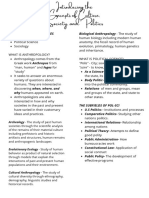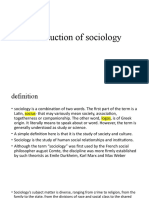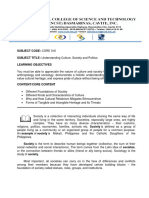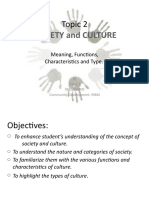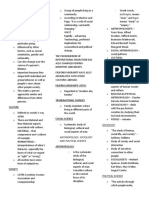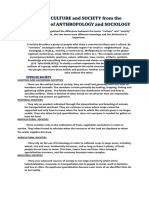0% found this document useful (0 votes)
12 views6 pagesHum Notes1
This research paper explores the sociological study of culture, defining sociology as a scientific discipline focused on understanding human behavior and social structures. It breaks down the concept of culture into its components, examines cultural diversity, and discusses the dynamics of cultural change and stability. Ultimately, it emphasizes the interconnectedness of society and culture, highlighting the importance of socialization in transmitting cultural norms and values.
Uploaded by
Tanveer HasanCopyright
© © All Rights Reserved
We take content rights seriously. If you suspect this is your content, claim it here.
Available Formats
Download as PDF, TXT or read online on Scribd
0% found this document useful (0 votes)
12 views6 pagesHum Notes1
This research paper explores the sociological study of culture, defining sociology as a scientific discipline focused on understanding human behavior and social structures. It breaks down the concept of culture into its components, examines cultural diversity, and discusses the dynamics of cultural change and stability. Ultimately, it emphasizes the interconnectedness of society and culture, highlighting the importance of socialization in transmitting cultural norms and values.
Uploaded by
Tanveer HasanCopyright
© © All Rights Reserved
We take content rights seriously. If you suspect this is your content, claim it here.
Available Formats
Download as PDF, TXT or read online on Scribd
/ 6




















